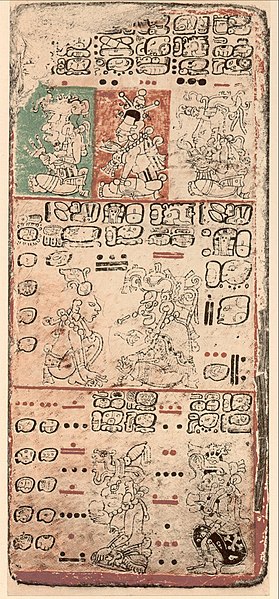Pre-Columbian art refers to the visual arts of indigenous peoples of the Caribbean, North, Central, and South Americas from at least 13,000 BCE to the European conquests starting in the late 15th and early 16th centuries. The Pre-Columbian era continued for a time after these in many places, or had a transitional phase afterwards. Many types of perishable artifacts that were once very common, such as woven textiles, typically have not been preserved, but Precolumbian monumental sculpture, metalwork in gold, pottery, and painting on ceramics, walls, and rocks have survived more frequently.
Sun Stone, at National Anthropology Museum in Mexico City
Colossal Olmec head N° 1 of San Lorenzo, Mexico
Feathered serpent sculpture in Teotihuacan
Mural in Tetitla, Teotihuacan
Visual arts of the Indigenous peoples of the Americas
The visual arts of the Indigenous peoples of the Americas encompasses the visual artistic practices of the Indigenous peoples of the Americas from ancient times to the present. These include works from South America and North America, which includes Central America and Greenland. The Siberian Yupiit, who have great cultural overlap with Native Alaskan Yupiit, are also included.
Crooked Beak of Heaven Mask, Kwakwakaʼwakw, 19th century
Dresden Codex, Maya, circa 11th or 12th century
A petroglyph of a caravan of bighorn sheep near Moab, Utah, United States; a common theme in glyphs from the southwestern desert
Archaic abstract curvilinear style petroglyphs, Coso Rock Art District, California








